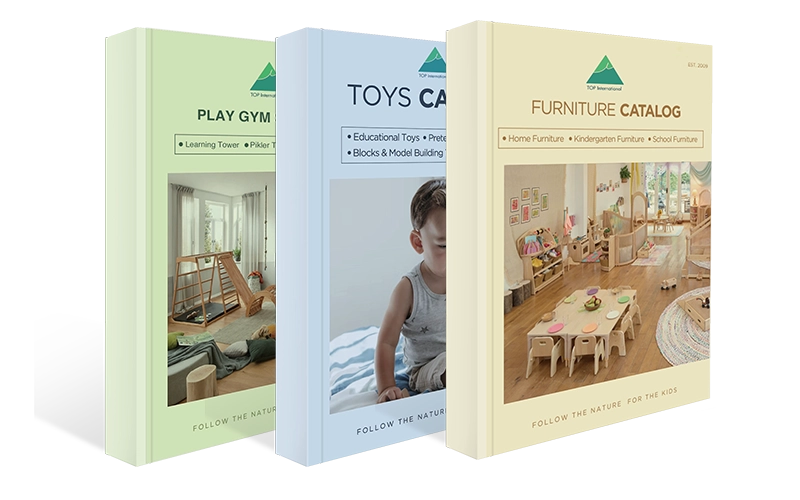Have you wondered how to keep your preschooler entertained and engaged this spring? Are you looking for activities that are both fun and educational? How can you make the most of the season while helping your little ones grow? Spring is the perfect time to foster creativity and learning with hands-on, outdoor activities!
Spring isn’t just a change in season—it’s a powerful opportunity for early childhood development. By introducing purposeful spring activities for preschoolers, we connect children to nature, stimulate their senses, and inspire creativity. These experiences nurture their curiosity, emotional growth, and physical health while aligning with Montessori and Reggio-inspired learning principles.
Let’s explore the fun world of springtime activities for young learners. Keep reading to discover everything from nature walks to hands-on crafts that spark your preschooler’s imagination!
What Are Spring Activities for Preschoolers?
Spring activities for preschoolers refer to the wide range of fun, educational, and engaging tasks designed to help young children explore, learn, and develop essential skills. With the change of season comes an opportunity for kids to embrace nature, improve motor skills, and stimulate creativity. From outdoor games to hands-on spring crafts and activities, these tasks cater to all aspects of child development.
Spring preschool activities are ideal because they often involve nature-based exploration, hands-on experiences, and artistic projects. These activities introduce children to new concepts, such as the growth of plants, the behaviors of animals, and the beauty of changing weather patterns. For example, spring arts and crafts activities for preschoolers provide an excellent way for children to use their imagination while learning about colors, shapes, and textures.
Whether it’s engaging in spring outdoor activities like nature walks and scavenger hunts or crafting spring art activities for preschoolers, the possibilities for fun and learning are endless. These activities create a playful environment where preschoolers can develop fine motor skills, problem-solving abilities, and a love for learning.
When planning spring activities for preschoolers, teachers and caregivers can include activities that foster sensory exploration, such as planting seeds, painting flowers, and creating spring crafts and activities. These are more than just fun tasks—they support cognitive development, enhance social skills, and improve emotional regulation.
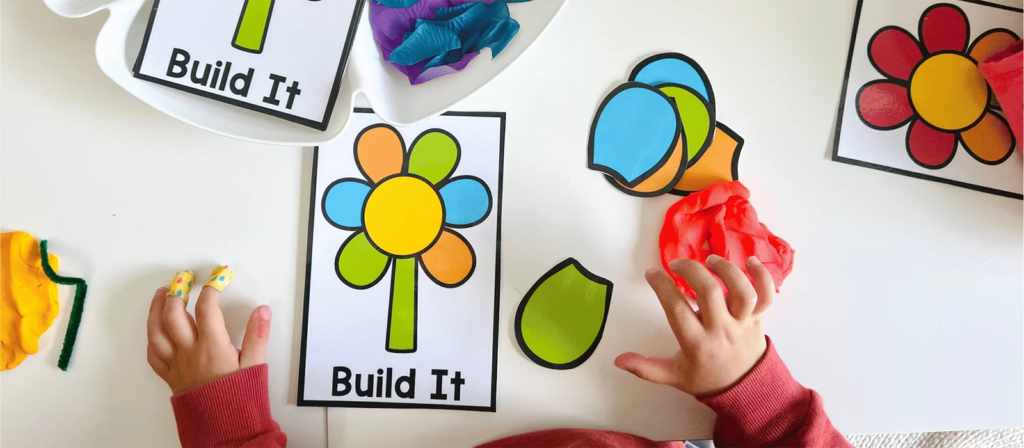
Why Are Spring Activities for Preschoolers Important?
Spring activities for preschoolers are much more than an opportunity to enjoy the outdoors. They are vital to a child’s development and enhance many skills. Here’s why engaging in spring activities for preschoolers is crucial:
1. Promotes Physical Development
Outdoor play during spring is essential for promoting physical development in young children. Spring activities for preschoolers and toddlers that involve running, jumping, and climbing help improve gross motor skills. For example, organizing a fun spring activity for kids, such as a relay race or obstacle course, enhances balance, coordination, and strength.
With longer days and warmer weather, spring outdoor activities like Frisbee, soccer, or playing in the sand provide children with ample opportunities to strengthen muscles and develop spatial awareness. Additionally, these activities help build endurance and healthy exercise habits from an early age.
Spring activities for preschoolers, such as hopscotch, swinging, or jumping rope, are excellent for refining gross and fine motor skills. These activities require coordination, agility, and control, making them perfect for physical development.
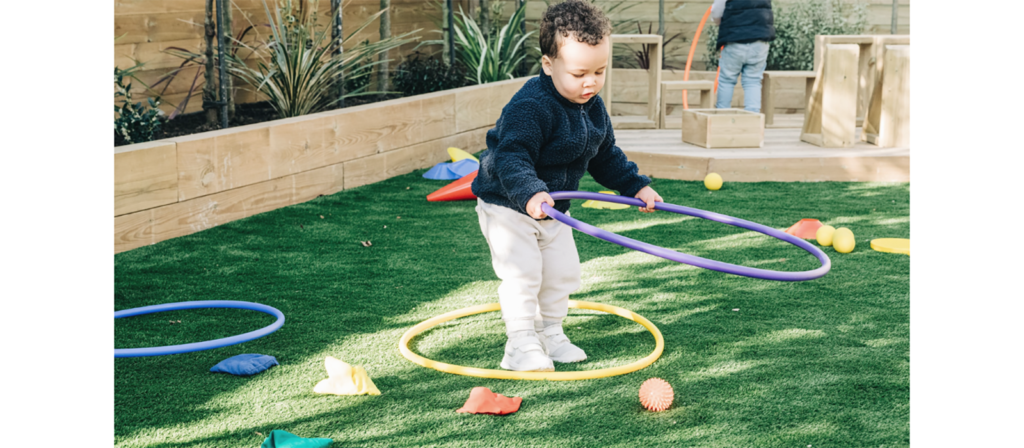
2. Enhances Cognitive Skills
Cognitive development is one of the key benefits of spring activities for preschoolers. These activities encourage children to engage with the world around them and think critically. For example, observing the growth of plants or creating a nature journal involves spring preschool activities that help children learn about the cycles of nature, cause and effect, and basic scientific principles.
Incorporating spring activities for preschoolers, such as drawing, painting, or sculpting, can also help build cognitive skills. Preschoolers can experiment with colors, shapes, and textures while improving their focus, attention span, and memory. Activities like science experiments for preschoolers (such as growing seeds in a jar) spark curiosity and encourage problem-solving.
Through hands-on spring activities for preschoolers, children practice following instructions, sequencing steps, and developing creative thinking. These activities also build vocabulary as children learn new words related to the season, such as “buds,” “bloom,” “pollen,” and “sunlight.”

3. Encourages Social Interaction
Social development is another important aspect of spring activities for preschoolers. Many spring activities for school involve group play, such as scavenger hunts or team-based outdoor games. These activities allow children to practice taking turns, sharing, and cooperating with others.
Organizing group projects like spring art and craft activities encourages collaboration and teamwork. Whether creating a collective mural of spring flowers or building a group garden, these activities foster social skills such as communication, negotiation, and empathy.
For example, spring craft activities for kindergarten can be made into a collaborative project where each child contributes to the more significant creation. This enhances the child’s ability to work together, listen to others, and respect diverse ideas and viewpoints.
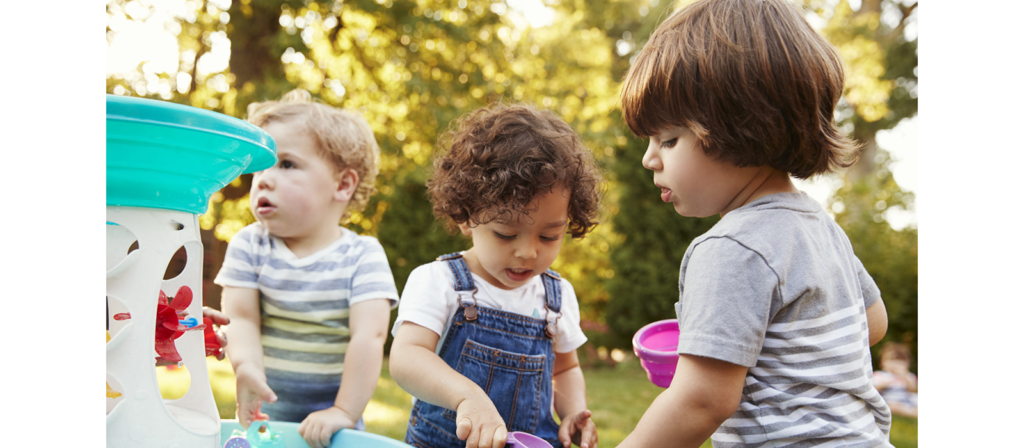
Ideal Kindergarten Environment for Spring Activities for Preschoolers
Creating the right environment for spring activities for preschoolers is essential to support their development and keep them engaged. A well-designed kindergarten or preschool setting can foster creativity, encourage outdoor exploration, and provide the safety needed for young learners. Below are some elements that contribute to the ideal environment for spring activities for preschoolers:
- Outdoor Play Spaces: The outdoor area should be spacious and safe to maximize spring activities for preschoolers and toddlers. A playground with climbing structures, swings, and slides allows children to engage in active play, which is vital for physical development. Adding grassy areas or sandboxes encourages sensory exploration and provides space for games like catch or running races.
- Natural Elements: One of the best ways to connect preschoolers with the natural world is by incorporating spring crafts and activities into the outdoor environment. Garden beds where children can plant flowers, herbs, or vegetables allow them to observe the growth process and learn about nature firsthand. Adding trees, bushes, and even a bird feeder provides an immersive experience for young learners.
- Sensory Spaces: Sensory play is a crucial aspect of preschool development, and spring art and craft activities can be designed to engage all five senses. A sensory garden with various textures, such as rough bark, soft petals, and smooth pebbles, can help children explore their sense of touch. Providing a space for water play, such as a water table or small pool, can also encourage learning through tactile experiences.
- Interactive Learning Materials: The environment should be stocked with educational tools that encourage spring science activities for preschoolers. This can include magnifying glasses to observe insects, measuring cups for water play, or books about the spring season. Additionally, having art supplies like colored paper, markers, paints, and natural items like leaves and sticks will inspire creativity and artistic expression.
- Flexible Indoor Areas: While outdoor activities are vital, an ideal preschool environment should also offer well-lit, flexible indoor spaces for spring art activities for preschoolers. Areas for crafting, drawing, and reading should be comfortable and adaptable to the changing needs of the children. Including a space for group discussions or quiet reflection can also help children process their experiences.
- Safety and Supervision: Ensuring the safety of preschoolers during spring outdoor activities is paramount. All play areas should be free of hazards such as sharp objects, and play equipment should be age-appropriate. Regular supervision is essential during physical activity; soft surfaces like grass or rubber mats can help prevent injuries.

Nature-Based Spring Activities for Preschoolers
1. Nature Scavenger Hunt
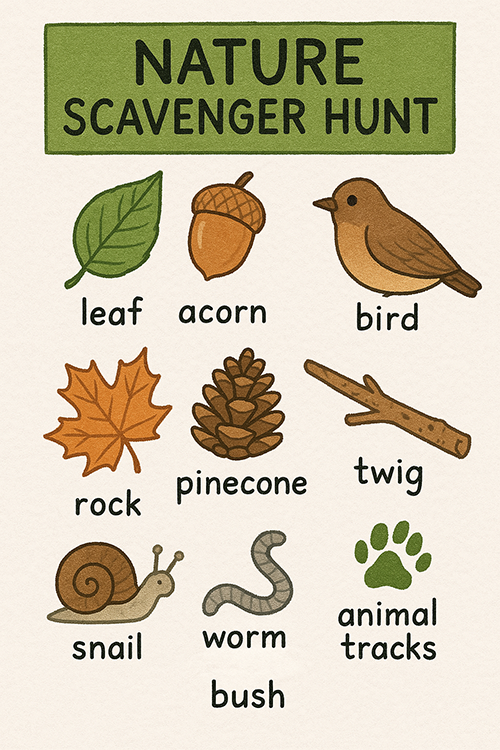
A nature scavenger hunt is a fantastic way to get preschoolers engaged with the outdoors. You can create a simple list of springtime items for children to find in the garden or at the park, such as a flower, a bird, a feather, or a green leaf. This activity is perfect for spring activities for preschoolers and is a fun way to encourage children to observe and explore the world around them.
Supplies Needed: A checklist of items to find, a basket to collect them, and possibly a magnifying glass for closer inspection.
Benefits: Encourages exploration, improves focus, and fosters a love for nature. It’s a great way to teach kids about the environment while keeping them physically active and engaged in spring activities for preschoolers.
2. Bug Collecting with Magnifying Glasses
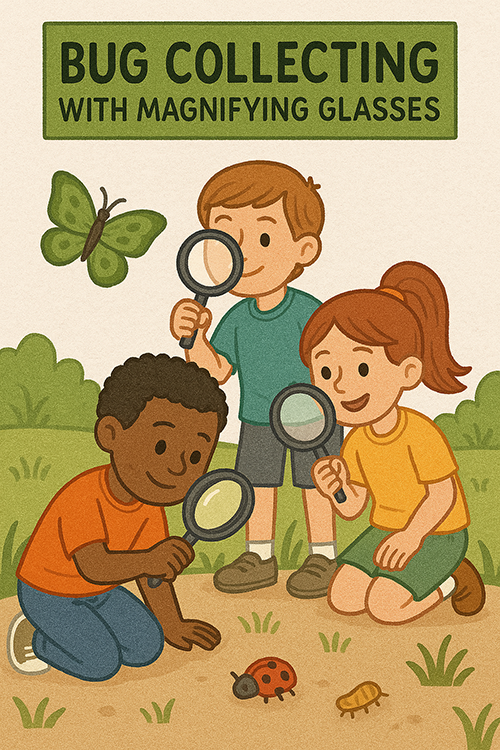
Let the little ones explore the fascinating world of insects! Bug collecting is one of the most engaging spring preschool activities, especially for those interested in science. Provide magnifying glasses and small containers to collect bugs like ants, beetles, or butterflies. This hands-on activity helps preschoolers develop patience, curiosity, and an understanding of the creatures that come to life in spring.
Supplies Needed: Magnifying glasses, small containers, and bug identification books (optional).
Benefits: Improves fine motor skills, encourages curiosity, and teaches kids about entomology and the role of insects in nature. It’s a great spring science activity for preschoolers.
3. Flower Pressing Craft
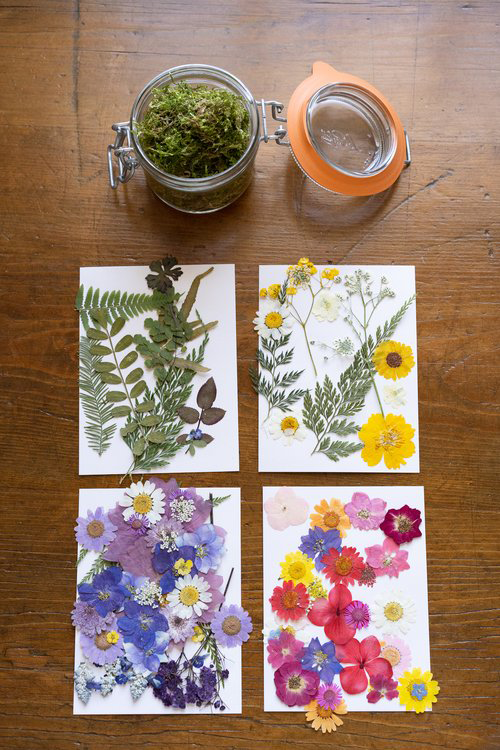
Spring arts and crafts activities are a perfect way to celebrate the beauty of nature with preschoolers. Flower pressing allows kids to preserve the flowers they find during walks or in the garden. After pressing, they can use the flowers to create beautiful collages, cards, or bookmarks. This activity fosters creativity and teaches children about preserving nature’s beauty.
Supplies Needed: Fresh flowers, wax paper, heavy books, scissors, and glue for crafts.
Benefits: Enhances creativity, teaches patience, and introduces basic concepts of preservation and nature. It’s one of the best spring art activities for preschoolers.
4. Grow a Mini Garden
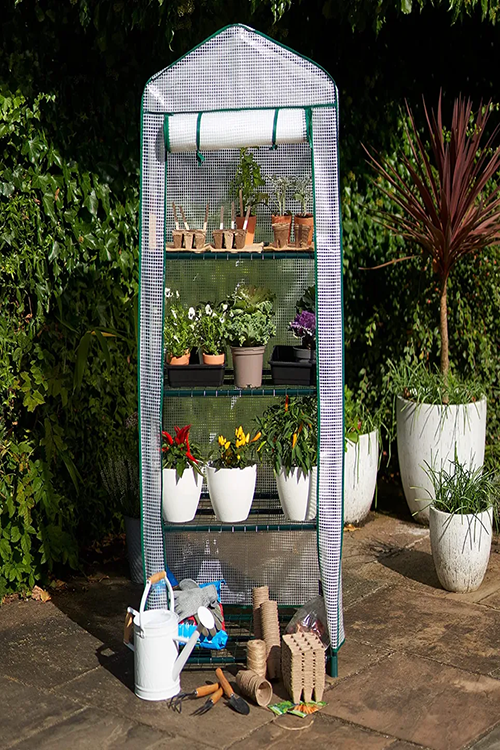
Gardening is an excellent way to engage preschoolers in hands-on learning and spring outdoor activities. Let each child plant flowers or vegetables in a small pot or a raised garden bed. They will learn about responsibility, patience, and growth as they care for their plants. Gardening can also introduce preschoolers to spring activities for preschoolers as they watch their plants grow and change.
Supplies Needed: Small pots or garden bed, soil, seeds or seedlings, watering can.
Benefits: Teaches responsibility, introduces scientific concepts, and allows children to see firsthand the growth miracle during preschool spring activities.
5. Bird Watching Bingo

Bird-watching is another fun and educational spring activities for preschoolers. Create a bingo card with pictures of common birds in your area, such as robins, sparrows, and blue jays. Take your preschoolers to the park, a backyard, or even a balcony to spot and identify the birds they see. This activity helps children develop observation skills while learning about different species of birds.
Supplies Needed: Bird bingo cards, binoculars (optional), and a camera or notebook to record observations.
Benefits: Enhances observational skills, fosters patience, and teaches kids about local wildlife during outdoor spring activities.

Creative Art Spring Activities for Preschoolers
6. Nature Paintbrushes
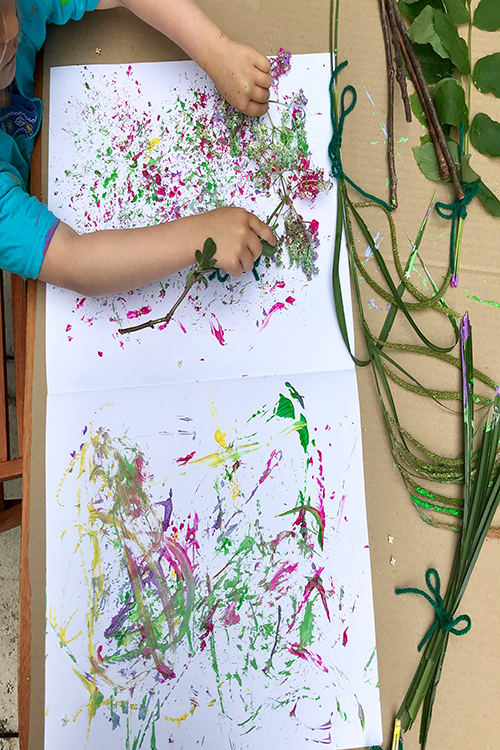
A great way to celebrate spring art activities for preschoolers is by making your nature paintbrushes. Let children gather twigs, pine needles, and leaves to use as brushes for painting. This activity is perfect for exploring textures and creating unique art pieces that reflect the beauty of the spring season.
Supplies Needed: Twigs, leaves, pine needles, paint, and paper.
Benefits: Encourages creativity, teaches texture exploration, and connects children to the outdoors while fostering artistic expression through spring activities.
7. Spring Collage with Natural Materials
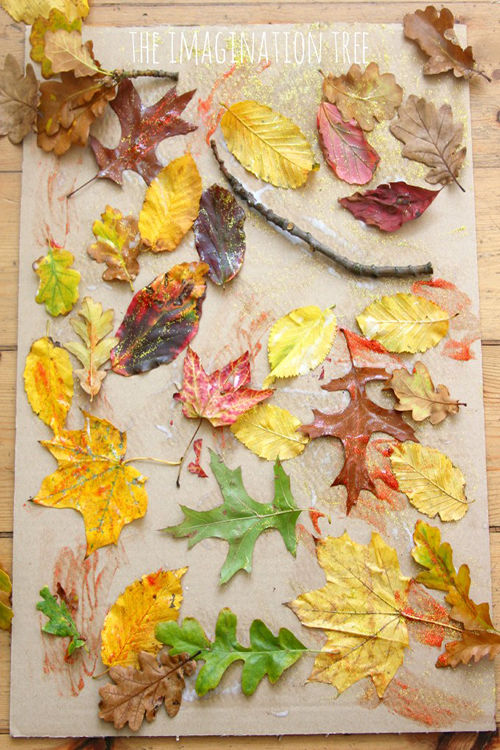
Creating a spring collage is an excellent activity to engage preschoolers with the natural materials they find outside. Children can collect leaves, flowers, twigs, and grass to create their masterpieces. This project promotes creativity and introduces the idea of using natural elements to make art, which is perfect for spring craft activities for preschoolers.
Supplies Needed: Scissors, glue, cardboard or large paper, and natural materials (petals, leaves, sticks, stones).
Benefits: Enhances fine motor skills, encourages creativity, and strengthens children’s connection to nature through preschool art activities in spring.
8. Rain Painting with Watercolors

Rain painting is a magical way for preschoolers to engage with spring art activities for kindergarten. Have children paint colorful pictures with watercolors, then place the paper outside in light rain. The rain will interact with the colors and create unique textures, patterns, and effects. This activity is a fantastic way to introduce kids to combining weather and art.
Supplies Needed: Watercolor paints, paintbrushes, heavy watercolor paper, and light rain.
Benefits: Enhances creativity, teaches about weather patterns, and provides an experimental approach to art during preschool spring activities.
9. Egg Carton Flowers

Egg cartons make for excellent crafting materials, and spring craft activities for preschoolers can’t get more creative than turning them into flowers. Cut the egg cartons into individual sections, paint them, and attach them to a stem (e.g., a pipe cleaner or a paper straw). This simple project allows children to practice fine motor skills while creating beautiful flower arrangements for spring.
Supplies Needed: Egg cartons, paint, glue, scissors, pipe cleaners or paper straws for stems, and optional decorative items like sequins or glitter.
Benefits: It encourages creativity and fine motor development and introduces recycling as an art form in spring activities for preschoolers.
10. Sunshine Handprint Craft
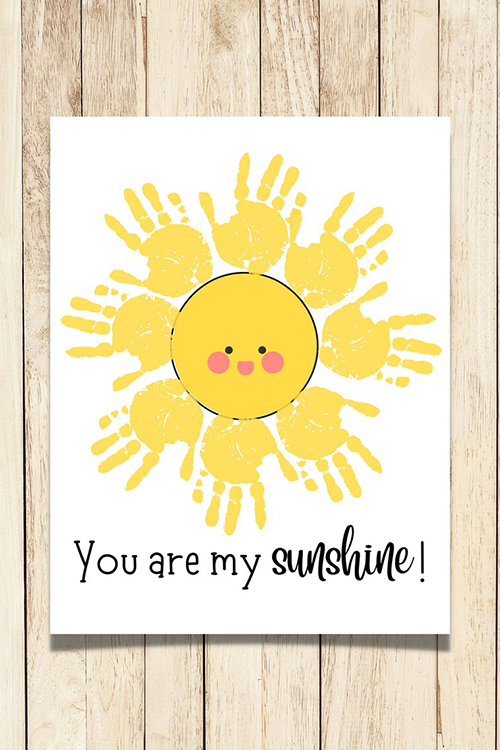
A handprint craft with sunshine is a heartwarming activity to celebrate the arrival of spring. Have kids dip their hands in yellow paint to make handprints on paper, and then add rays around the handprints to make them look like a sun. This project is perfect for young children as it incorporates their bodies into the artwork, making it both personal and creative.
Supplies Needed: Yellow paint, paper, markers, or colored paper for rays.
Benefits: It encourages creativity and sensory exploration and introduces the sun and spring weather through spring art and craft activities.

Spring-Themed Sensory Activities
11. Mud Kitchen Play
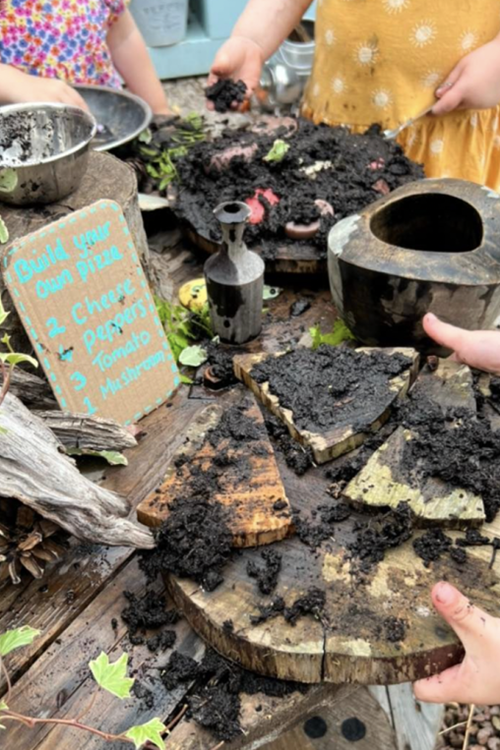
Mud kitchen play is a timeless favorite for preschoolers. It combines sensory exploration and imaginative play. Set up a mud kitchen outdoors, and let kids use old pots, spoons, and bowls to “cook” with dirt, leaves, and water. This is a fun way to engage toddlers in spring activities while helping them develop fine motor skills and an appreciation for messy play.
Supplies Needed: Old kitchen pots, spoons, bowls, dirt, water, leaves, and plastic utensils.
Benefits: Promotes sensory development, imaginative play, and motor skills during spring activities for preschoolers.
12. Flower-Scented Playdough

Add natural flower scents to transform your classic playdough into a sensory experience. Children can roll, flatten, and shape the dough into different spring shapes while smelling the flowers. This activity enhances fine motor skills and creativity while engaging toddlers and preschoolers in spring art activities.
Supplies Needed: Playdough, flower essential oils (e.g., lavender), and dried flowers.
Benefits: Improves fine motor skills, boosts creativity, and introduces a sensory experience with spring crafts and activities.
13. Sensory Bin with Spring Items
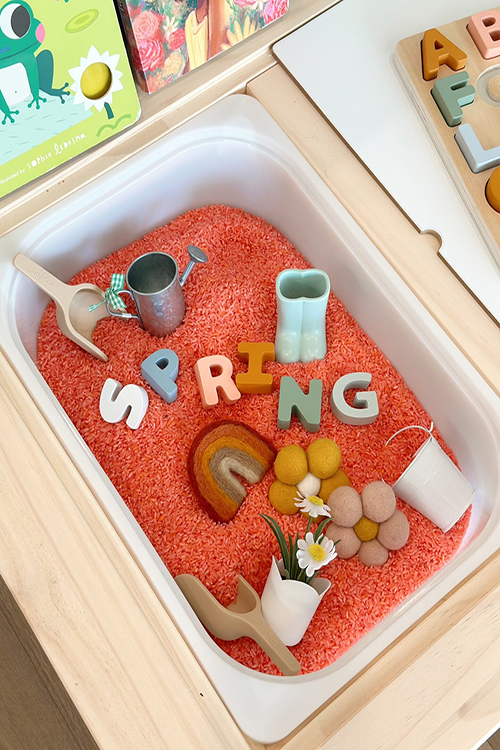
A sensory bin filled with natural spring materials like petals, leaves, and toy bugs is perfect for engaging children in tactile learning. This activity lets kids explore a variety of textures while enhancing fine motor skills through scooping, sorting, and burying objects in the sensory bin. It’s also a great way to encourage creative play.
Supplies Needed: A plastic bin, rice or beans, fake grass, toy bugs, flowers, small toys, and scoops.
Benefits: It enhances sensory development and fine motor skills and promotes independent, imaginative play during preschool spring activities and crafts.
14. Water Table with Spring Twist

A water table filled with spring-themed items like rubber ducks, frogs, and plastic flowers provides endless fun and learning for preschoolers. They’ll enjoy pouring and splashing while learning about the properties of water, which is perfect for improving coordination and understanding basic science concepts.
Supplies Needed: Water table, rubber ducks, toy frogs, plastic flowers, and cups or watering cans.
Benefits: Encourages hand-eye coordination, introduces basic science concepts, and promotes outdoor spring activities.
15. Grass Cutting Tray

Set up a grass-cutting tray for preschoolers to practice using child-safe scissors. This outdoor activity is an excellent way to teach responsibility and the importance of care in nature. As children cut the grass, they’ll improve their motor skills and understand how nature needs to be tended to.
Supplies Needed: Child-safe scissors, grass or small plants, a tray, and a mat for easy cleanup.
Benefits: Enhances fine motor skills, introduces real-world tools, and supports sensory exploration during spring activities for preschoolers.

Outdoor Spring Activities for Preschoolers
16. Picnic in the Park
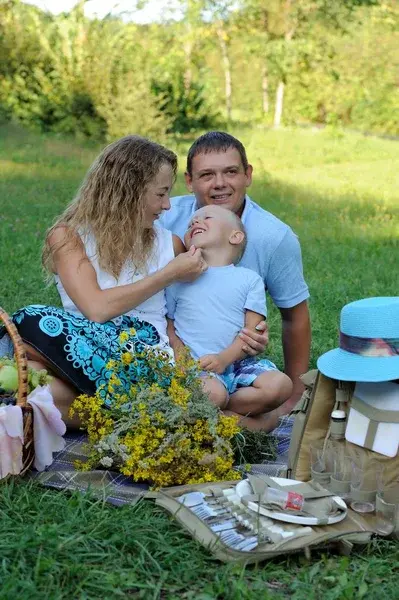
A picnic in the park is a delightful and straightforward way for preschoolers to enjoy the outdoors. Whether relaxing on a blanket or enjoying snacks in the fresh air, this activity promotes social skills and an appreciation for nature. It’s a perfect fit for spring activities and allows kids to develop new social habits with friends or family.
Supplies Needed: Picnic blanket, basket with snacks, drinks, and toys or books.
Benefits: Encourages outdoor play, promotes social interaction, and helps children appreciate eating healthy during fun spring activities for Egg cartons make for excellent crafting materials, and spring craft activities for preschoolers can’t get more creative than turning them into flowers. Cut the egg cartons into individual sections, paint them, and attach them to a stem (e.g., a pipe cleaner or a paper straw). This simple project allows children to practice fine motor skills while creating beautiful flower arrangements for spring.
Supplies Needed: Egg cartons, paint, glue, scissors, pipe cleaners or paper straws for stems, and optional decorative items like sequins or glitter.
Benefits: It encourages creativity and fine motor development and introduces recycling as an art form in spring activities for preschoolers.
.
17. Spring Obstacle Course

An obstacle course in the backyard is an exciting way for preschoolers to get active. Create an environment where kids can run, jump, and crawl through hoops, cones, or tunnels. This encourages physical activity while also improving motor skills and confidence.
Supplies Needed: Hula hoops, cones, jump ropes, tunnels, and other safe items for creating obstacles.
Benefits: Enhances gross motor skills, boosts confidence, and promotes physical fitness through spring activities for school.
18. Sidewalk Chalk Rainbows
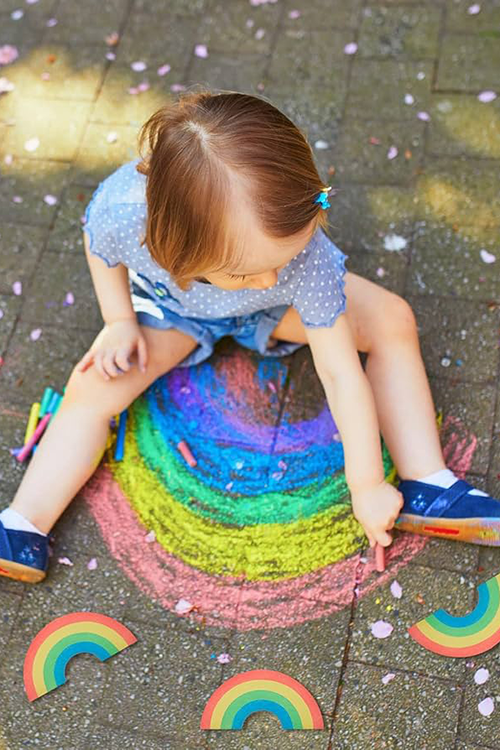
Sidewalk chalk offers a fun, artistic way to celebrate spring. With bright colors, kids can create rainbows and colorful scenes right on the driveway or sidewalk. This is one of the most leisurely and fun spring art activities for preschoolers and is ideal for teaching children to express their creativity through outdoor art.
Supplies Needed: Sidewalk chalk in various colors and a clean outdoor space.
Benefits: It boosts creativity and fine motor skills, and provides an excellent opportunity for spring activities for Egg cartons make for excellent crafting materials, and spring craft activities for preschoolers can’t get more creative than turning them into flowers. Cut the egg cartons into individual sections, paint them, and attach them to a stem (e.g., a pipe cleaner or a paper straw). This simple project allows children to practice fine motor skills while creating beautiful flower arrangements for spring.
Supplies Needed: Egg cartons, paint, glue, scissors, pipe cleaners or paper straws for stems, and optional decorative items like sequins or glitter.
Benefits: It encourages creativity and fine motor development and introduces recycling as an art form in spring activities for preschoolers.
.
19. Bubble Blowing Bonanza
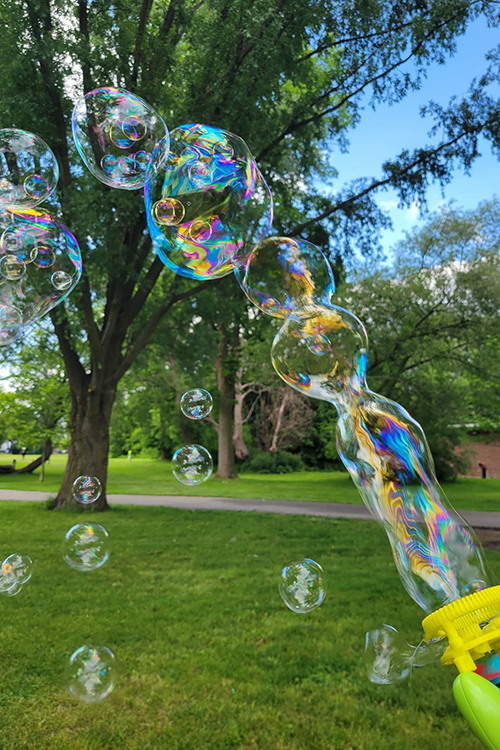
Bubbles bring out the joy in every preschooler. This simple activity lets kids chase and pop bubbles, enhancing their hand-eye coordination and spatial awareness. You can also experiment with bubble wands of various sizes to create different shapes.
Supplies Needed: Bubble solution, bubble wands, and an outdoor space for bubble chasing.
Benefits: Development of hand-eye coordination, sensory stimulation, and support for physical activity during spring activities.
20. Kite Flying Adventure
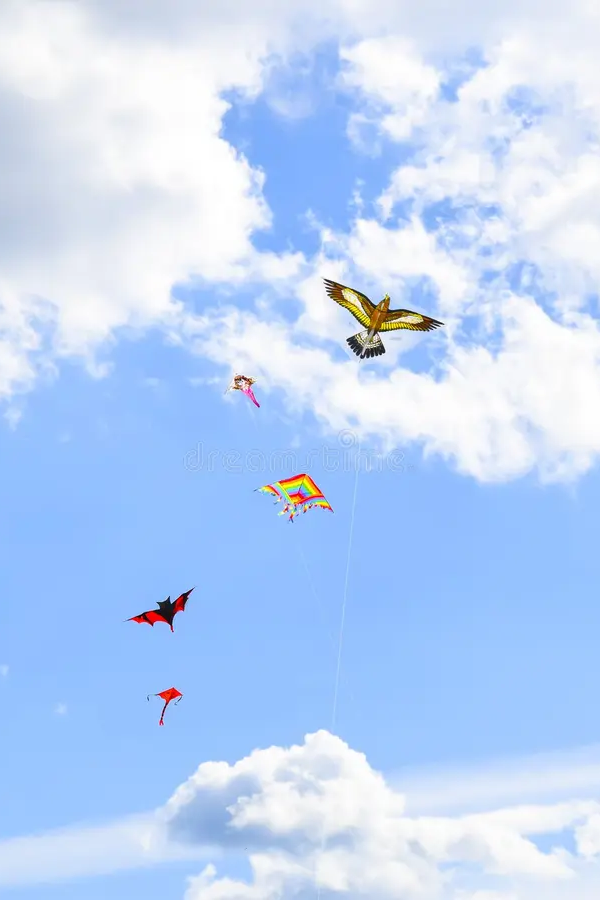
Flying kites is a fantastic outdoor activity that preschoolers will love, especially on a windy spring day. Bring a brightly colored kite to a park or field and teach your child how to fly it. The excitement of getting a kite up in the air is exhilarating, and it also helps develop coordination and understanding of wind and weather patterns.
Supplies Needed: A kite and an open space.
Benefits: It develops coordination, teaches about wind, and encourages outdoor play.

Spring Preschool Activities
21. Spring Alphabet Hunt

Turn learning into a playful outdoor adventure with a spring alphabet hunt. Hide foam letters or letter cards around your yard or classroom, and challenge preschoolers to find each one. Once they find a letter, please encourage them to say the letter’s name and sound. You can make it even more exciting by adding a spring-themed twist—ask them to find the letters following spring-related objects like flowers or bugs.
Supplies Needed: Foam letters or letter cards, a basket for collection, and a list of spring-related objects for each letter.
Benefits: Helps improve letter recognition, enhances vocabulary, and adds movement to learning.
22. Counting Flower Petals

Introduce preschoolers to early math concepts with a fun counting flower petal activity. Gather various flowers from the garden or a nearby park, and encourage your child to count the petals on each flower. You can also explore patterns and simple addition or subtraction by removing or adding petals. This activity is a great way to combine science and math in a playful, hands-on way.
Supplies Needed: Fresh flowers with visible petals, a small notebook or counter to record the counts.
Benefits: Reinforces counting skills, introduces early math concepts, and connects children to nature.
23. Garden Tool Sorting
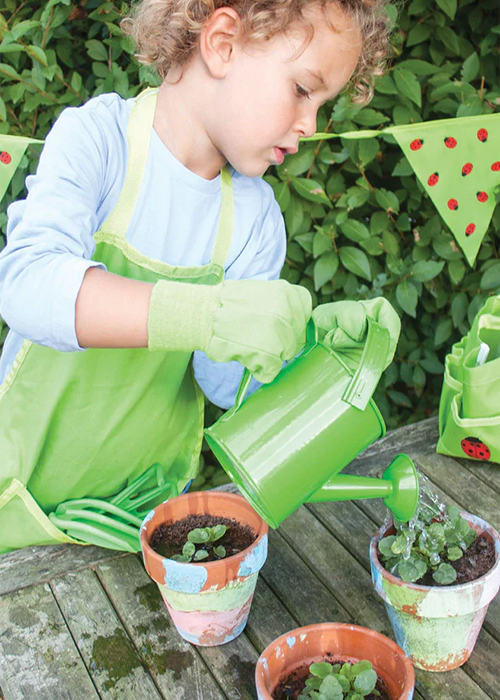
Turn your gardening supplies into a fun sorting activity for preschoolers! Gather various garden tools like spades, rakes, and watering cans and ask the children to sort them based on size, color, or function. As they sort, talk about the purpose of each tool and how it helps plants grow. This hands-on activity helps preschoolers learn about tools while promoting organization skills.
Supplies Needed: Various garden tools (real or toy), sorting trays or boxes.
Benefits: Improves fine motor skills, promotes categorization, and introduces practical life skills.
24. Nature Walk with Nature Bingo

A nature walk is one of preschoolers’ most exciting spring activities, offering an excellent opportunity to explore the outdoors. Make the experience even more interactive with a nature bingo game. Create bingo cards with images of everyday springtime items such as flowers, trees, birds, and insects. Children can mark these objects on their cards when they spot them during the walk. This activity fosters observation skills and encourages a love for nature.
Supplies Needed: Nature bingo cards, pencils or markers, and a nature-filled area like a park or garden.
Benefits: Enhances observation skills, promotes outdoor exploration, and increases environmental awareness.
25. Papier Mache Easter Egg

A papier mache easter egg craft is a fantastic way for preschoolers to celebrate Easter while engaging in a hands-on activity that improves fine motor skills and creativity. Children can create their own 3D Easter eggs using a papier mâché technique, which involves layering paper strips over a balloon and then decorating them once they’re dry.
Supplies Needed: Balloons, strips of newspaper or tissue paper, flour and water for the papier mâché paste (or ready-made paste), paint, brushes, and decorative items like glitter, stickers, or beads.
Benefits: Enhances creativity, improves fine motor skills through tearing paper and painting, and introduces a fun spring craft focusing on texture and layers. Plus, it’s a great way to celebrate Easter meaningfully with hands-on fun.

26. Spring Animal Tracks
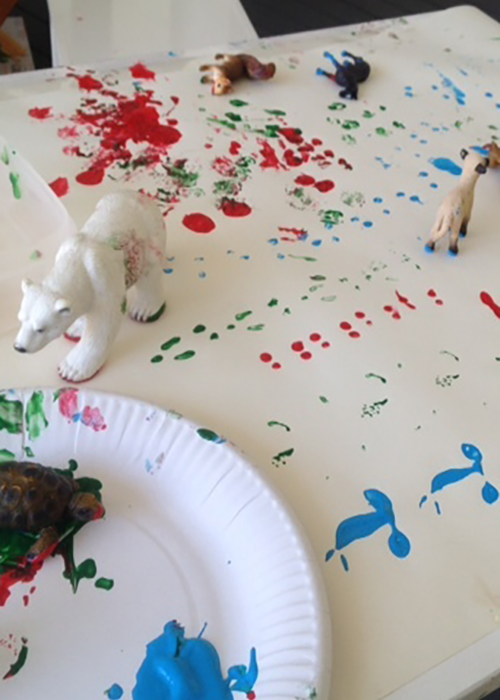
Create animal tracks in the dirt or mud and let preschoolers guess which animal they belong to. You can make tracks for various spring animals like rabbits, squirrels, or birds using stamps or stencils. Discuss with children the types of active animals during spring and how they leave behind tracks in the mud or dirt.
Supplies Needed: Stamps or stencils for animal tracks, mud or dirt, and animal pictures or toy figures.
Benefits: Encourages scientific thinking, helps develop observation skills, and promotes outdoor learning.
27. Spring Sensory Nature Art
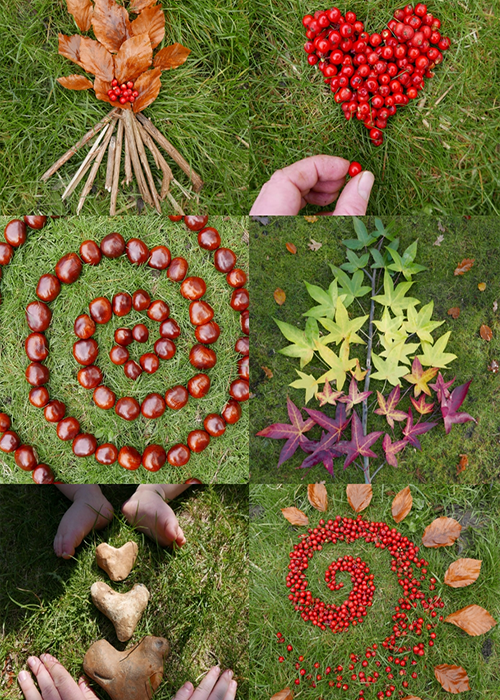
This creative activity combines art with sensory exploration, allowing preschoolers to engage with nature through multiple senses. Gather natural items like leaves, twigs, petals, and small stones. Set out a large sheet of paper and encourage children to use these items to create a beautiful spring-themed collage. They can also experiment with textures by rubbing crayons or markers over the objects to reveal the shapes and patterns beneath.
Supplies Needed: Leaves, twigs, flowers, small stones, large paper, crayons, or markers.
Benefits: Enhances creativity, promotes sensory exploration, and encourages an appreciation for nature’s textures.
28. Color Mixing with Spring Flowers

Introduce preschoolers to the concept of color mixing in a fun and hands-on way by using spring flowers. Fill shallow trays with water and add a few drops of different food coloring. Let children dip white flower petals (real or artificial) into the water to see how they change color. This activity demonstrates color mixing and allows preschoolers to observe the changes in real time.
Supplies Needed: Water, food coloring, white flower petals (real or artificial), shallow trays.
Benefits: Teaches color theory, enhances sensory exploration, and helps develop fine motor skills by manipulating petals.
29. Spring Wind Chimes Craft
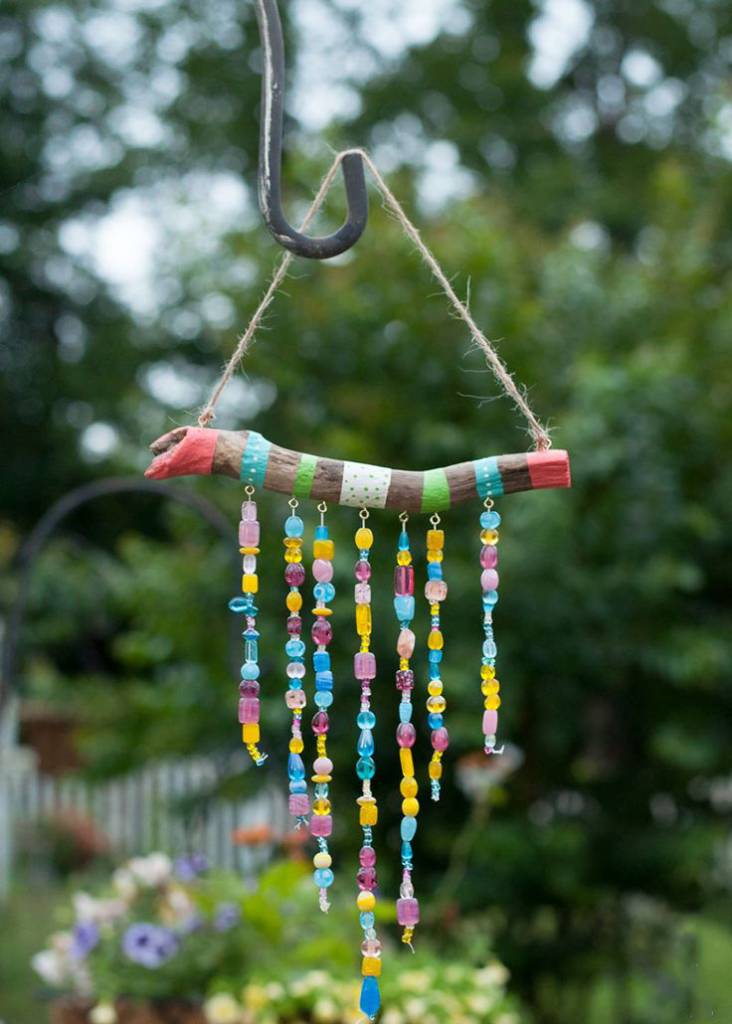
Creating spring wind chimes from natural or recycled materials is a delightful and calming craft for preschoolers. Use materials such as bamboo sticks, beads, string, and small bells. Let the children decorate and assemble the wind chimes while learning about the sounds they make when the wind blows.
Supplies Needed: Bamboo sticks, string, beads, bells, and decorative items (feathers, paint, etc.).
Benefits: It encourages creativity, improves fine motor skills, and introduces children to the concepts of sound and movement in nature.
30. Flower Crown Craft
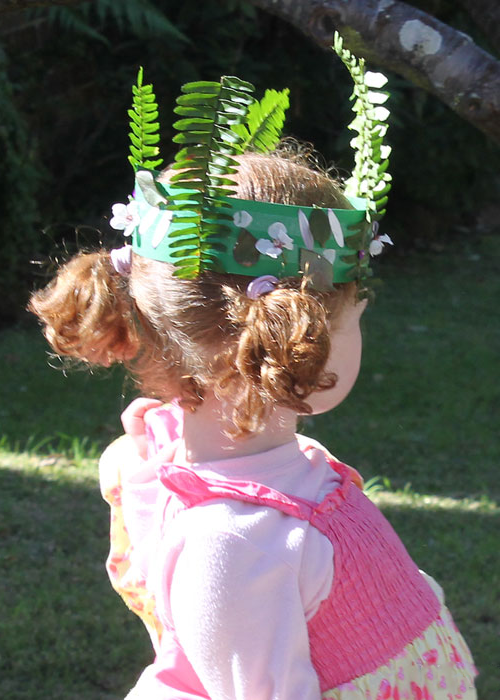
A flower crown craft is a fun way for preschoolers to create wearable art. Use artificial or real flowers, pipe cleaners, and floral tape to make beautiful crowns. Children can pick out the flowers they like and assemble them into a crown, learning about different flower types and colors.
Supplies Needed: Artificial or fresh flowers, pipe cleaners, floral tape, scissors.
Benefits: Improves fine motor skills, enhances creativity, and encourages a deeper connection to the beauty of nature.

31. Butterfly Coffee Filter

This delightful spring art activity allows preschoolers to explore color mixing and symmetry. Children color coffee filters with washable markers, then spray them lightly with water to see the colors blend beautifully. Once dry, the filters are scrunched in the middle and clipped with a clothespin to create the butterfly’s body. Add pipe cleaner antennae to complete the look.
Supplies Needed: White coffee filters, washable markers, spray bottle with water, clothespins, pipe cleaners.
Benefits: Supports creativity, teaches color theory and symmetry, enhances fine motor coordination, and introduces the concept of metamorphosis.
32. Flower Petal Collage

Hands-on spring craft that encourages preschoolers to explore textures, colors, and natural beauty. Children collect real flower petals from a nature walk or garden, then glue them onto paper to create unique designs or images, such as butterflies, rainbows, or abstract art.
Supplies Needed: Fresh or dried flower petals, construction paper, glue sticks, markers or crayons (optional for drawing backgrounds).
Benefits: Develops fine motor skills, fosters creativity, promotes sensory exploration, and teaches about the structure and variety of flowers.
33. Natural herbal modeling dough

This calm and sensory-rich spring activity allows preschoolers to explore touch, smell, and creativity. The dough is made with natural ingredients and infused with herbs like lavender, chamomile, or mint. Children can roll, shape, and mold the dough into spring-themed objects like flowers, insects, or leaves while enjoying the soothing aromas.
Supplies Needed: Flour, salt, cream of tartar, water, vegetable oil, dried herbs (lavender, chamomile, mint), natural food coloring (optional), mixing bowl, saucepan.
Benefits: Strengthens hand muscles, encourages imaginative play, supports sensory development, and introduces children to the calming effects of natural herbs.
34. Fingerprint bunnies & chicks

A charming spring art activity that turns tiny fingerprints into adorable animals. Preschoolers dip their fingers in pastel-colored paint and press them onto paper to create the base shapes of bunnies and chicks. Once dry, they can add ears, beaks, eyes, and whiskers using markers or paint.
Supplies Needed: Non-toxic washable paint (yellow, white, pink), paper, markers or fine paintbrushes, wet wipes for cleanup.
Benefits: Enhances fine motor skills, encourages self-expression, supports sensory development, and helps children learn about animals commonly associated with spring.
35. Growing beans on cotton balls

This classic spring science activity for preschoolers introduces them to plant growth in a simple, hands-on way. Children place beans on damp cotton balls in a clear cup or plastic bag, then observe the daily changes as roots sprout and stems grow.
Supplies Needed: Dry beans (lima or mung beans work well), cotton balls, clear plastic cups or ziplock bags, water, spray bottle.
Benefits: Teaches early science concepts like germination and life cycles, enhances observation skills, and promotes responsibility as children care for their growing plants.
36. Cherry blossom pompom tree

It is a beautiful spring art activity that lets preschoolers celebrate the bloom of cherry blossoms using soft craft materials. Children create a tree trunk and branches by drawing or gluing brown paper onto a background, then add pink and white pompoms as blossoms.
Supplies Needed: Construction paper (brown and blue or white), pink and white mini pompoms, glue, scissors, and optional tweezers for picking up pompoms.
Benefits: Carefully placing small objects improves fine motor coordination, introduces seasonal changes and tree anatomy, enhances creativity, and strengthens hand-eye coordination.
37. Broccoli blossom tree

This is a fun and surprising spring art activity in which preschoolers use broccoli florets as paint stampers to create beautiful spring trees. Children dip the cut end of a broccoli piece into pink, white, or red paint and stamp it onto paper to mimic cherry or apple blossoms on tree branches. This unique method introduces texture in art while tying in nature and healthy food.
Supplies Needed: Broccoli florets, washable paint (pink, white, red, green), paper, paint tray or plate, brown marker or crayon for tree trunks and branches.
Benefits: Encourages creativity, introduces new art techniques and textures, reinforces healthy food recognition, and enhances fine motor control through stamping and brushwork.
38. Spring Flower Play-Dough Tray

It is a vibrant and open-ended sensory activity where preschoolers use colorful play dough and nature-inspired accessories to create their springtime scenes. The tray includes flower-shaped cookie cutters, small artificial flowers, leaf cutouts, and natural elements like twigs or stones. Children can design gardens, flowerpots, or imaginative landscapes, creating a wonderful blend of tactile play and creativity.
Supplies Needed: Play dough in spring colors (green, yellow, pink, purple), flower and leaf cookie cutters, small artificial flowers, twigs, stones, a tray or shallow bin.
Benefits: Promotes sensory exploration, strengthens fine motor skills, inspires imaginative thinking.
39. Spring Activities for Math
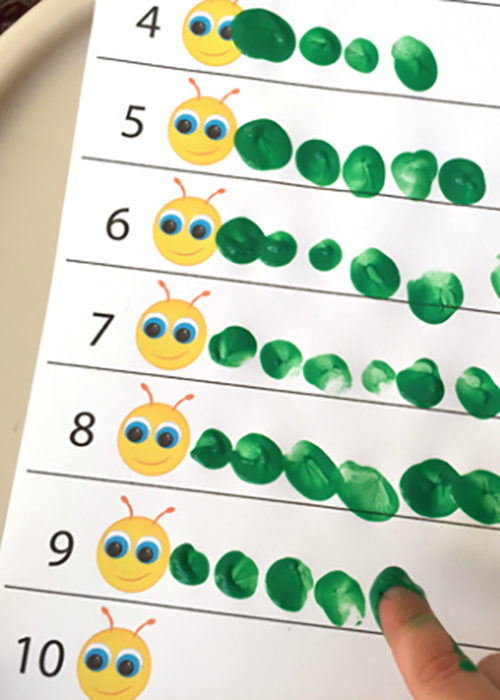
Combine seasonal themes with hands-on learning to help preschoolers build early math skills in a fun and meaningful way. Using items like flower petals, plastic eggs, or ladybug counters, children can practice counting, sorting, measuring, and pattern recognition.
Supplies Needed: Plastic eggs, flower petals (real or paper), small counters (ladybugs, bees, or bugs), number cards, measuring cups, sand or water, baskets or trays.
Benefits: Develops foundational math skills (counting, measuring, sorting, patterns), enhances problem-solving, builds number recognition, and makes math approachable through seasonal, hands-on play.
40. Frozen chalk paint

It is a colorful and cooling spring art activity that combines sensory play with outdoor creativity. Preschoolers mix sidewalk chalk powder with water and freeze it in ice cube trays with craft sticks. Once frozen, the cubes become vibrant paint tools for drawing on sidewalks or paper.
Supplies Needed: Sidewalk chalk powder or crushed chalk, water, ice cube trays, craft sticks, mixing bowls, large drawing paper or pavement.
Benefits: Enhances fine motor skills, encourages outdoor art exploration, introduces states of matter (solid to liquid), and provides a multi-sensory, temperature-based experience for early scientific learning.
FAQs
1. How can I incorporate learning into spring activities for preschoolers?
Many spring preschool activities can be both fun and educational! For example, you can integrate learning into activities like counting flower petals, sorting garden tools, or even creating a spring alphabet hunt. These activities help preschoolers practice counting, letter recognition, and fine motor skills while enjoying spring’s wonders.
2. Are any spring art activities that help preschoolers with motor skills?
Yes, absolutely! Spring art activities for preschoolers, such as making flower crown crafts, creating leaf prints, or engaging in spring nature collages, help develop fine motor skills. Tasks like cutting, gluing, and arranging objects strengthen hand-eye coordination and dexterity, making them both fun and beneficial.
3. Can I use these activities for kindergarten students?
Absolutely! Many of the spring preschool and spring activities for preschoolers are adaptable. They can be tailored to suit various age groups, making them great for mixed-age classrooms or home activities.
4. What are some indoor spring activities for preschoolers on rainy days?
Rainy spring days don’t have to stop the fun. Great spring activities for preschoolers indoors include flower-themed sensory bins, spring storytime with books about plant life cycles, and indoor scavenger hunts using spring-related items like butterflies, rain boots, or stuffed animals. You can also try matching games with spring vocabulary or simple puppet shows about the weather and blooming flowers. These activities keep children engaged while reinforcing seasonal learning.
5. How can I incorporate nature into spring activities for preschoolers without going outside?
If going outside isn’t an option, you can still bring nature into your classroom or home. Collect leaves, twigs, or petals in advance and let children use them for sorting, collage-making, or storytelling. Another idea is to grow seedlings on windowsills or create nature-themed sensory bottles. These indoor spring activities for preschoolers still offer hands-on exploration and connect children to the environment.
6. How do spring activities for preschoolers support early literacy?
Spring activities for preschoolers can support early literacy in multiple ways. For instance, labeling flower parts during art projects introduces vocabulary. Singing spring-themed songs and reciting rhymes develop phonological awareness. Story-based crafts, like creating a picture after reading a spring-themed book, also help children make connections between text and meaning. Integrating words into play makes literacy fun and natural.
7. How can I adapt spring activities for preschoolers with special needs?
Inclusive spring activities for preschoolers should be flexible and sensory-friendly. Use larger, easy-to-grasp tools for fine motor tasks, offer quiet spaces for overwhelmed children, and provide visual instructions for crafts or games. Sensory bins with spring themes, soft-texture flower crafts, and guided garden exploration can all be tailored for different developmental needs, ensuring that every child can engage meaningfully in spring learning.
Conclusion
Spring offers endless possibilities for fun and educational activities that engage preschoolers, toddlers, and kids of all ages. Whether you’re planning spring activities for preschoolers, spring activities for preschoolers, or looking for spring outdoor activities, there’s no shortage of creative and engaging options to explore. From sensory-rich play to hands-on learning and outdoor adventures, these spring craft activities are perfect for fostering creativity, building fine motor skills, and promoting a love for nature and science. Incorporating these spring activities and crafts will help your little ones develop essential skills and create lasting memories filled with fun, laughter, and exploration.








